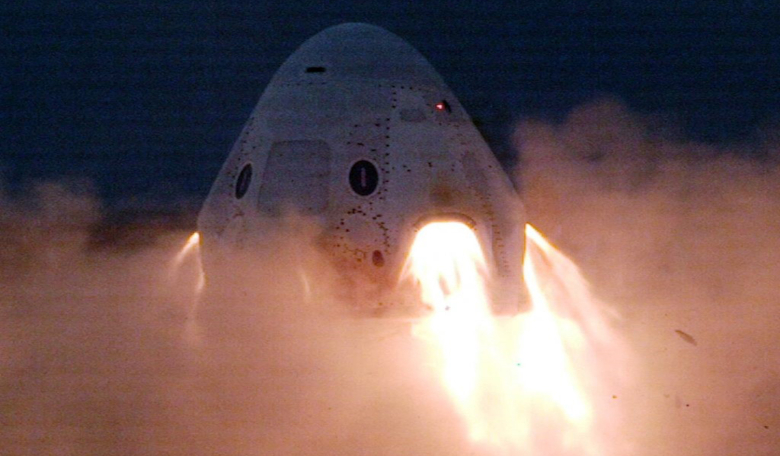The next big test of SpaceX’s Crew Dragon astronaut capsule won’t happen before 11 January, 2020 after NASA announced at least a one-week delay just before Christmas.
SpaceX must get NASA’s approval to transport humans aboard Crew Dragon and this in-flight test of the capsule’s launch-abort system is part of that process. The test will demonstrate the capsule’s ability to fire engines that separate it from the top of a SpaceX Falcon 9 rocket shortly after liftoff in case of an emergency during a launch. A Russian cosmonaut and US astronaut survived a Soyuz launch in 2018 thanks to such a system.
NASA is helping to pay for the development of Crew Dragon and one other capsule design, Boeing’s CTS-100 Starliner, under the Commercial Crew Program. Both capsules are meant to carry crew members to the International Space Station (ISS) and back. NASA plans to buy the flights from each company as a service rather than owning the vehicles.
The upcoming in-flight abort test follows a battery of Crew Dragon tests in 2019, some good and some bad.
Receiving plenty of fanfare, SpaceX sent a Crew Dragon, without a crew, to the ISS and back for the first time last March.
But a Crew Dragon vehicle exploded during a static test of its eight launch-abort engines on ground at SpaceX’s Landing Zone 1 at Cape Canaveral Air Force Station in Florida.
NASA and SpaceX later said the accident resulted from a leak in the launch-abort propulsion system while pressurizing the system and just 100 milliseconds before ignition of eight SpaceX SuperDraco thrusters exclusively for this purpose. SpaceX redesigned parts of the system to prevent the same thing from happening again.
SpaceX also had to redesign the Crew Dragon’s parachutes in 2019 after a test in which one of the four parachutes was supposed to fail, in order to find out how the remaining three performed in such an event, and instead the other three parachutes also failed to open.
As of November, SpaceX had announced 13 consecutive successful tests of the redesigned parachutes and a successful ground test of the launch-abort engine sequence to be performed in the upcoming flight test, lifting off from Launch Complex 39A at Kennedy Space Center in Florida.
Meanwhile, Starliner took off 20 December, 2019 on its first uncrewed flight to the ISS, which although did not end up rendezvousing with the space station as scheduled, it did complete many crucial tests needed before astronauts are due to fly aboard in 2020.
Both companies originally bid to have their designed approved for human spaceflight by 2017. NASA didn’t give a reason for the most recent delay and says all future Commercial Crew launch dates, beyond the SpaceX in-flight launch abort test, are “currently under review”, including the first time astronauts will fly in either Crew Dragon or Starliner.











